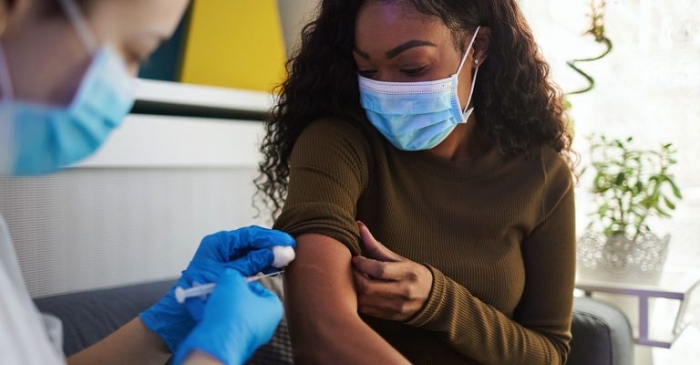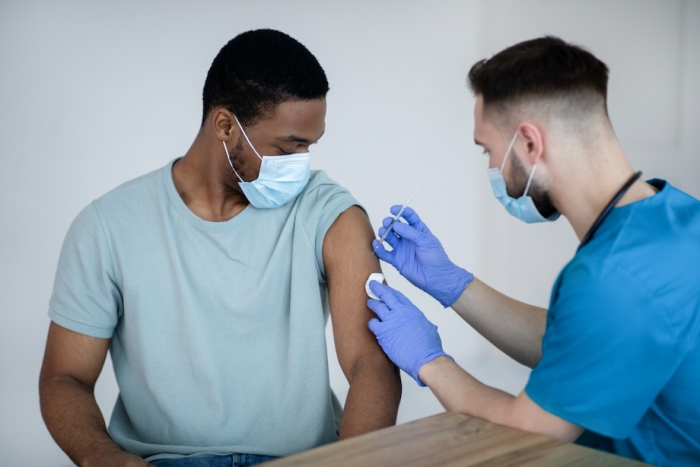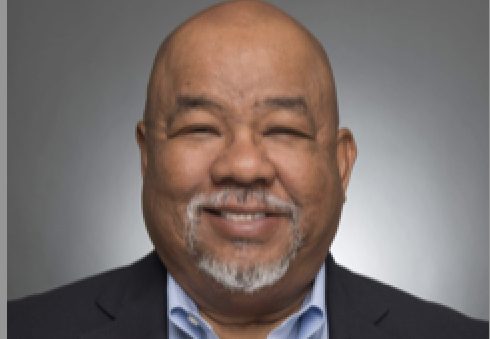
The challenge facing Black businesses and the people who work there
By Danny J. Bakewell, Jr.
Executive Editor
There is no doubt that the COVID-19 Pandemic has been a challenge to every business. But the challenges that are facing African American-owned businesses are an even greater one. Not only for the business owner but for the employees and the customers they serve. As of Friday, November 5, every restaurant, bar, lounge, or other communal facility is required to obtain proof of vaccination for its patrons. They also are required to make sure that every employee is vaccinated. But how do you meet this goal when many of your key employees are adamant that they will not or do not want to get vaccinated. According to KFF trusted medical data, anti-Vaxxers, as they are commonly known, are roughly 45% of our community. But the severity of this decision in many ways is one of the newest forms of gentrification within our community.
The survival of Black businesses coming out of the pandemic is critical, and while many companies and organizations have already shuttered in the wake of the pandemic, now business owners run the risk of a different form of business deterioration as the new laws restrict many of their unvaxxed patrons from entering their business; the same conflict is likely to restrict key employees unwilling to take the vaccine, forcing them to either leave the job or the owner risk severe fines or even a complete shutdown of their business.
Employers also have a responsibility to ensure the health and safety of their employees; this should be first and foremost on the minds of every business owner. The COVID-19 virus’s primary transmission is through communal spread and has already killed over half a million Americans. Employers now face a critical pandemic tug of war as new requirements mandate employee vaccinations under the “general duty clause” or OSHA-imposed obligations to ensure a workplace “free from the recognized hazards that are causing or are likely to cause death or serious physical harm to employees.”

Not obeying these steps and or ignoring this responsibility leaves businesses open to negligence claims and workers’ compensation claims relating to workplace COVID-19 transmission. Most employers want to protect their employees while at the same time weighing potential liability concerns if vaccines are not required. The owner’s desire for balance is not callous—a single lawsuit arising from an employee’s death after COVID-19 exposure could literally bankrupt many small or medium-sized businesses.
According to an online source, the City of Los Angeles will require proof of vaccination at indoor restaurants, bars, gyms, shopping centers, entertainment venues, and personal care establishments within the city beginning on Monday, Nov. 8. The mandate was initially expected to go into effect on Nov. 4, but because the ordinance did not receive 12 votes from the city council on Oct. 6, the ordinance was unable to go into effect until one month after its publication.
Vaccines have been readily available since December 2020; yet, approximately 1,500 Americans are still dying of COVID-19 each day. To ignore this fact is not only detrimental to the health of everyone but puts those businesses not adapting or applying some sort of preventative COVID measures in place puts their business at risk.

- To Vaccinate
In a community where so many people are hesitant to get vaccinated due to their distrust of mandated vaccinations, the American government has earned the trust of most Americans. Health officials suggest that this choice, while difficult for some, is the only option. Initially, most employers have been hesitant to implement a mandatory vaccination policy, but as time progresses and as the virus lingers, businesses are finding themselves in a “no choice” position.
The EEOC has approved mandatory employee vaccinations as an acceptable path in the fight against COVID-19. And, although this option may seem risky and/or heavy-handed, there are a plethora of reasons employers would consider implementing this policy; they are required to protect everyone within the workplace as well as protect community health. It’s presumed that ensuring employees are vaccinated would ideally reduce absences and a loss of productivity while avoiding potential liability. Although implementing a mandatory policy does have many risks (considering some medical issues or religious beliefs prevent some employees from being vaccinated), under applicable laws, an employer’s duty and responsibility for the safety of its customers, employees, and community, outweighs any personal anti-vaccination beliefs aside from religious or medical objections.
In an article written by the Association of Corporate Counsel (ACC), in December 2020, the EEOC issued guidance related to this dichotomy. First, the EEOC announced that a vaccine is not a medical exam. According to EEOC updated guidelines on thompsonhine.org, “the EEOC squarely concludes that COVID-19 vaccines are not “medical examinations” under the ADA. The EEOC reasons that an employer who administers the vaccine is not seeking information about an employee’s current health status or impairments. Accordingly, administering a COVID-19 vaccine is not prohibited or limited by the ADA.”
With the guidance updates, one legal pitfall is therefore avoided – an employer does not have to justify a mandated vaccination policy. However, although the vaccination itself is not a “medical exam,” pre-vaccination screening questionnaires may implicate the ADA’s prohibition on disability-related inquiries or Title II of the Genetic Information Nondiscrimination Act (GINA), and employers must craft such inquiries to not run afoul of those laws.
For example, employers must demonstrate the disability-related screening inquiries such as any prior allergic reactions are “job-related and consistent with business necessity” to not conflict with the ADA’s prohibitions on gathering medical information. Further, an employer can meet this showing only if it can demonstrate the employee is a direct threat to the health or safety of him or herself or others. This multi-step analysis can feel like navigating land mines to an employer trying to keep its employees safe.
One way to avoid this problem and still maintain a mandatory vaccination policy is to require employees to receive their vaccinations from a third party with whom the employer does not have a contract with (e.g., a pharmacy or private healthcare provider).
- Not To Vaccinate The other option employers have is to do nothing and ignore the issue altogether. An employer/business that chooses to do nothing or remain silent, while this may be the most comfortable, has the most risk. Certainly, this approach would avoid the difficulties in navigating through ADA, GINA, Title VII, and other complicated restrictions. Further, this option would avoid potential clashes with those employees who simply do not want to be vaccinated – not for a religious or medical reason, but based on personal beliefs.
However, while employers can circumvent these hurdles by turning an eye, other risks grow exponentially. OSHA is hardening its approach to enforcement of safety measures relating to COVID and California which is a pro-vaccination state. They are coming down even harder than other states on those businesses that elect to do nothing.
Whether to vaccinate or not is not an easy question, and the answers are just as complex. But it is a choice that businesses and business owners must deal with. Employees also have to deal with this issue, and some have elected to walk away from their position in a need to stand up for their beliefs.
This is not an attempt to pass judgment on those who elect to go either way. It is however a look at the reality of choice facing those within our community for the very survival of our community businesses and those who reside within it.







